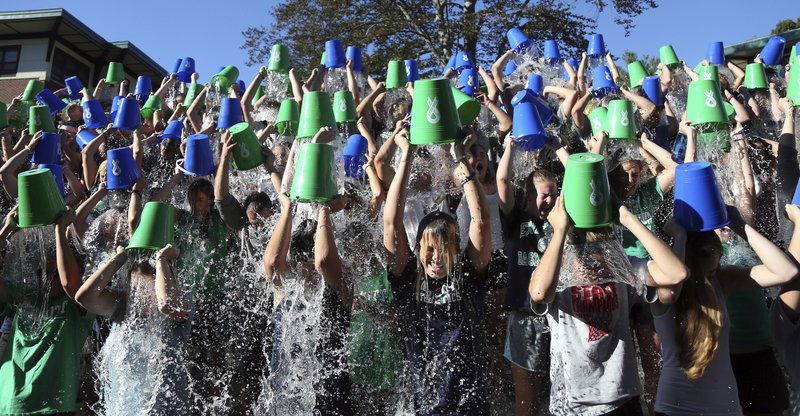The Ice Bucket Challenge

The Ice Bucket Challenge began in 2013 as the “cold water challenge” and was used to raise money for different causes. It began to be associated with Amyotrophic lateral sclerosis (ALS) or Lou Gehrig’s disease after a baseball player with the condition, Pete Frates, began posting about it on Twitter. From there, the challenge began spreading rapidly with Facebook users posting more than 17 million videos of the feat and Instagram users 3.7 million. Celebrities like Anna Wintour, Bill Gates, and Tom Cruise did the challenge, which saw donations to ALS organisations reach $220 million. In eight weeks, the American ALS Association received 13 times what it received for the whole of 2013.
The challenge was not without its critics, who said it was a form of “slacktivism”—a way for people to do good without doing much—and that it raised too much money for a relatively obscure disease, which could have been better spent elsewhere. Despite their criticism though, the Ice Bucket Challenge was a powerful, mobilising campaign that educated people about ALS disease—Google’s fifth most-searched term in 2014. The ALS Association was able to dramatically increase its spending on research, and scientists have since discovered five genes associated with the disease. Two new drugs are being trialled to target ALS while 15,000 patients are helped each year.
It’s difficult to predict what will go viral and even harder to make something take off. What helped the Ice Bucket Challenge was its human nature, its visual element, and the fact that it was rapidly adopted by celebrities. It was also an easy thing to do that only required people to have a bucket of cold water, a smartphone, and a spare five minutes. It’s a good reminder that for some campaigns, less is more.